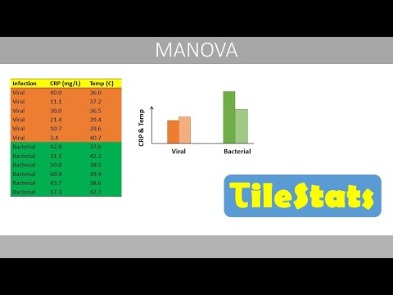Rather than tracking every activity from the start, focus on the most impactful activities. These activities could account for the highest expenses or complex production processes. For example, look at your most expensive operations or the processes contributing the most to overhead costs. As mentioned before, there is no clear formula for calculating period costs. Period costs reduced net income when they are expensed on the income statement. Period costs take from the revenue of a company during that accounting period and thus will have an impact on the net income for that period.
One advantage of this treatment is the ability to clearly match expenses with the period’s revenue, offering a more precise measure of an organization’s profitability. On the flip side, it might pose challenges in managing cash flows, as companies need to account for these expenses periodically, regardless of cash availability. Understanding Period Costs is crucial for any who files schedule c: profit or loss from business looking to navigate the complex landscape of financial management. By grasping the distinction between Period Costs and Product Costs, businesses can accurately assess their expenses and make informed decisions to improve profitability. From administrative and selling expenses to marketing costs and depreciation, every Period Cost plays a role in shaping a company’s financial health. Using the cost driver rates, costs are then allocated to specific products or services based on their consumption of the cost drivers.
- Sales and marketing costs may be commission for the sales team, salary for the marketing team, advertising costs to boost brand awareness, market research, and product design.
- Liabilities are normally things that are settled over time through the transfer of money, goods, or services.
- In the intricate world of accounting, period costs hold a vital place, shaping how companies understand their financial performance.
- Some examples of what a product costs include, direct labor, raw materials, manufacturing supplies, and overhead that is directly tied to the production facility, such as electricity.
- The $10 direct materials would be a debit to cost of goods sold (increasing) and a credit to inventory (decreasing).
- They are also included in determining the amount of revenue that has been earned when an asset is sold, which in turn can affect both revenues and costs in future accounting periods.
Define Cost Drivers
This means day-to-day operational costs or expenses a business faces in its regular operations. Resources consumed to provide or maintain the organization’s capacity to produce or sell are capacity costs or supportive overheads. Capacity costs are further divided into standby costs and enabling costs. Standby costs will continue if the firm shuts down operations or facilities temporarily. Examples are depreciation, property taxes, and some executive salaries. Period expenses appear on the income statement with an appropriate caption for the item, which acts as a disclosure, in the period when the cost is incurred or recognized.
- Examples include salaries and wages, rent, utilities, marketing expenses, and depreciation.
- The period costs could not be capitalized as they are not directly related to the production of the inventory and hence are charged in the profit and loss statement of the company.
- Following is the profit and loss statement of ABC Ltd, you are required to compute period expenses.
- The most common of these costs are sales and marketing costs and administrative costs.
- Another way to identify period costs is to establish what doesn’t qualify as such.
- The wages paid to a construction worker, a pizza delivery driver, and an assembler in an electronics company are examples of direct labor.
Traditional Costing vs. Activity Based Costing
The accountant must carefully review the time-related costs and decide whether they should be included in an income statement. Time cost represents a major portion of indirect costs, making it important for the smooth operation of the business. Examples of period costs include selling and administrative expenses. Both of these types of expenses are considered period costs because they are related to the services consumed over the period in question. Product costs are all the costs that are related to producing a good or service.
Step 1: Identify Activities and Cost Pools
Period costs are only reported on the income statement for the period in which they are used up or incurred. So, it is only for that accounting period that period costs will reduce the net income. These expenses are not directly related to the production of inventory and thus does not form part of the cost of goods sold and are charged in the income statement of the company.
How to Allocate Period Costs?
By implementing robust performance evaluation and monitoring processes, businesses can identify cost-saving opportunities, optimize resource utilization, and drive sustainable growth and profitability. Choosing the appropriate method of allocating Period Costs depends on factors such as the nature of the business, the complexity of operations, and the availability of data. Direct allocation provides a simple and transparent way to assign costs to cost objects, making it easier to trace expenses and calculate the true cost of producing goods or services. However, not all Period Costs can be directly allocated, especially those that benefit multiple cost objects simultaneously.
Manufacturing
The firm will not incur enabling costs if operations shut down but will incur them if operations occur. Some will likely be constant over the entire output range; others will vary in steps. For example, a single-shift operation might require only one departmental supervisor, but the operation of a second shift will require a second supervisor. Such cost classifications have been proven useful to people, like most analysts who develop several costs, classifying them per their uses in various managerial applications. Identifying and categorizing these costs is important as different purposes require different cost constructs.
These costs are identified as being either direct materials, direct labor, or factory overheads, and they are traceable or assignable to products. To illustrate, assume a company pays its sales manager a fixed salary. A manufacturer’s product costs are the direct materials, direct labor, and manufacturing overhead used in making its products. Advertising, market research, sales salaries and commissions, and delivery and storage of finished goods are selling costs. The costs of delivery and storage of finished goods are selling costs because they are incurred after production has been completed. TranZact offers a valuable resource for Indian Manufacturing SMEs needing help with period costs.
They can share files, comment at the task level and stay updated with email and in-app notifications. Join teams at Avis, Nestle and Siemens who use our software to deliver successful projects. A budget dashboard is a visual tool that uses charts and graphs to show important financial metrics, such as planned costs vs. actual costs. Use this free budget dashboard in Excel to monitor costs to stay on budget. This ensures that every expense is recorded under the right activity. Make sure your employees understand how ABC works and why it is important.
You must cCreate an account to continue watching
It was estimated that a rate of 10% would be required to pay $5.4 million annually (simple interest rule) and which they could capitalize on in the initial year. Then in upcoming years, they need to take the interest expense to profit and loss statement. So they have hired a financial advisor who common size financial statement shall advise them on how to proceed upon the same that is getting funds and not impacting their stock price much. Below is a break down of subject weightings in the FMVA® financial analyst program. As you can see there is a heavy focus on financial modeling, finance, Excel, business valuation, budgeting/forecasting, PowerPoint presentations, accounting and business strategy. ProjectManager is online project and portfolio management software that connects teams whether they’re in the office or out in the field.
For example, if a product uses 500 machine hours, and the cost driver rate is $10 per hour, the allocated cost for that product would be $5,000. This step ensures that each product or service receives a fair share of the total overhead costs. Accountants treat all selling and administrative expenses as period costs for external financial inventory cycle for manufacturers retailers and distributors reporting. The company has one very large manufacturing facility but has a few dealerships and offices around the country. The company manufactured and sold 1,000 cars during the fourth quarter. Period costs are calculated by identifying costs classified as period costs.
This way you’ll have a better idea of the expenses and give a better idea of the net income of your company. Indirect allocation requires careful consideration of allocation bases to ensure that costs are allocated fairly and accurately. Common methods of indirect allocation include the use of predetermined overhead rates or activity-based costing (ABC) systems. Understanding period costs is important for wise decision-making and financial management as a business owner. This article offers valuable information on the importance and effect of period costs on your overall financial business strategy. Read further to understand Period Costs, the factors surrounding their meaning, different types, advantages, and examples.
Are Sales Commissions Period Costs?
Period costs are not attached to products and the company does not need to wait for the sale of its products to recognize them as expense on income statement. According to generally accepted accounting principles (GAAPs), all selling and administrative costs are treated as period costs. They are also included in determining the amount of revenue that has been earned when an asset is sold, which in turn can affect both revenues and costs in future accounting periods. Unlike period expenses, operating expenses often cannot be easily identified by when payments are received or made during the accounting periods that they affect. Many employees receive fringe benefits paid for by employers, such as payroll taxes, pension costs, and paid vacations. These fringe benefit costs can significantly increase the direct labor hourly wage rate.







